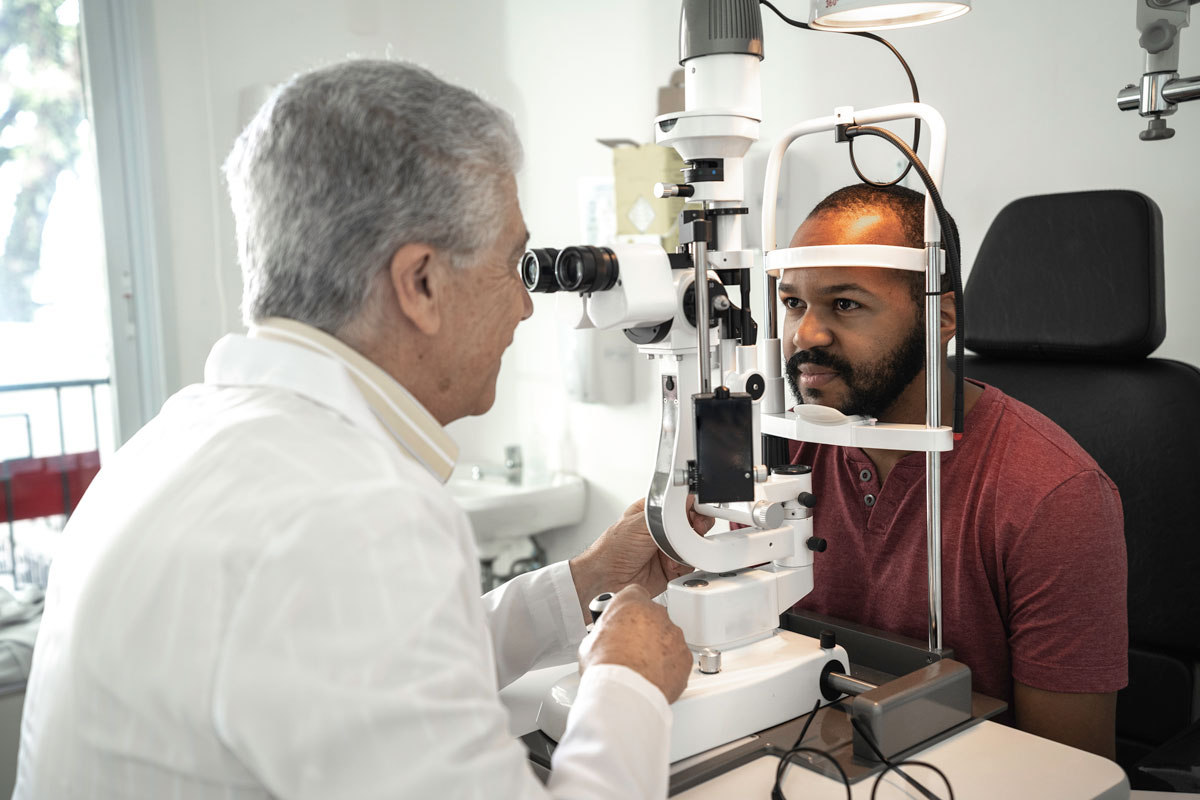 |
|
The 15-month results of this study on community-based eye health screening suggest that targeting high-risk populations for such initiatives might help to detect ocular diseases like glaucoma in patients who otherwise wouldn’t receive proper testing or care. Photo: Getty Images. |
To investigate the extent of undetected ocular disease, particularly among the public housing community, and ways in which screening can aid in early detection, researchers conducted a five-year prospective, cluster-randomized controlled trial called the Manhattan Vision Screening and Follow-up Study. Included participants were at least 40 years old and resided in public housing developments in New York City. The 15-month baseline results, recently published in the American Journal of Ophthalmology, suggest the screening initiative shows promise to improve access to eye care and earlier ocular disease detection in high-risk populations.
All individuals (n=708, mean age=69) completed eye health screenings consisting of visual acuity with correction, IOP measurements and fundus photography. Of the cohort, 65.1% were female, 51.8% were African American and 42% were Hispanic. Individuals were considered to have failed the screening and were consequently scheduled for a follow-up exam if they had a visual acuity of 20/40 or worse, IOP levels of 23mm Hg to 29mm Hg or an unreadable fundus image. Those with abnormal fundus images were referred to an ophthalmologist.
More than three-quarters of participants failed the eye health screening (78.4%). Additionally, 35% had an abnormal fundus image, and 24.7% of the scans were unreadable. One in four participants were glaucoma suspects, 11.7% of whom had been previously diagnosed. Overall, 66.1% of screened individuals exhibited findings suggestive of ocular disease and were referred to ophthalmology.
Of the participants who were scheduled for and attended the follow-up optometric exam, 30.8% ended up being referred to ophthalmology, while 36% were diagnosed with refractive error and either received complimentary eyeglasses or an eyeglass prescription.
The researchers also conducted a cost analysis alongside the study, factoring in costs of staff time, equipment, supplies, optometrist eye exams, personal protective equipment and travel. They concluded that the cost per participant to deliver the screening and optometric exam was $180.88, while the cost per case of eye disease detected was $273.64.
This ongoing study is “the first community-based study in New York City targeting residents living in public housing to detect glaucoma and other eye diseases in a predominately older, African American and Hispanic population,” the researchers pointed out in their paper, adding that 93% of participants reported being very satisfied with the screening. “Public housing developments offer unique opportunities to reach socioeconomically disadvantaged and underserved adults and seniors as a strategy to improve access to eye care,” they explained.
Hark LA, Horowitz JD, Gorroochurn P, et al. Manhattan vision screening and follow-up study (NYC-SIGHT): baseline results and costs of a cluster-randomized trial. Am J Ophthalmol. January 20, 2023. [Epub ahead of print]. |


